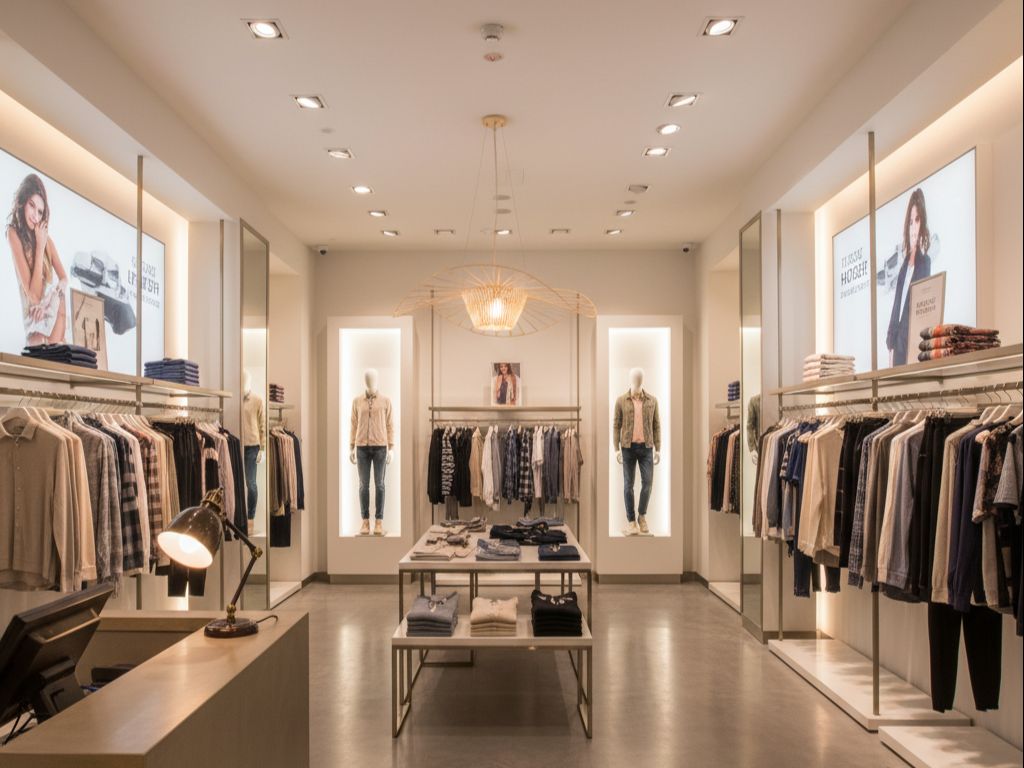Designing with light means understanding its effect and combining types of lighting to achieve balanced, functional and attractive spaces.
The lighting of a space can be classified according to the function it serves, as each type of light responds to a specific need within the space. This classification helps to improve visual comfort, save energy and maintain a balanced aesthetic appearance, ensuring that each zone is well lit according to its purpose.
From a technical and architectural point of view, understanding these types of lighting allows you to better plan where to place lights, how much intensity to use and what control systems to employ.
In addition, from a design and utility perspective, each type of light serves to create moods, highlight shapes, orient people or facilitate specific tasks, bringing visual coherence to the space. It is not enough to put a lamp here, a lamp there and that’s it.
Below, we will take a closer look at the different layers of lighting, with examples and case studies showing how they are applied in different environments.
Table of Contents
Natural lighting
Natural lighting comes from the sun and is the healthiest way to illuminate a space, as our body is accustomed to its daily rhythms.
From an architectural point of view, taking advantage of it means planning well where to place windows or skylights and how to orient the rooms to receive as much light as possible during the day. For example, east-facing windows let in the morning light, creating a pleasant, energetic atmosphere.

In design, natural light makes colors look more real and spaces appear larger. Its intensity and tone change with the hours: warm at dawn, cooler at midday and warm again at dusk. These changes, called circadian cycles, help set the natural rhythm of the day.
Because of these variations, natural light can influence how we feel. In the morning, bright light activates us; at the end of the day, golden light relaxes us. In offices with skylights or glass walls, it reduces the need for artificial light and improves mood. At home, taking advantage of it saves energy and creates healthier spaces connected to the outdoors.
General lighting
General lighting is the lighting foundation of any space. It provides uniform light that ensures comfortable and constant visibility, facilitating daily activities without causing eyestrain. It is most often used in homes, offices, commercial premises and public spaces, where balanced and functional lighting is needed.
Also known as basic ambient lighting, its main purpose is to allow people to move around and perform their tasks with ease, maintaining a pleasant and practical atmosphere.
Technical aspects
From a technical point of view, it is achieved with ceiling lights that distribute light in a wide and balanced way. A typical example is LED downlights. These lights avoid pronounced shadows and ensure that the entire room has a constant level of illumination. For example, in a living room, recessed spotlights can illuminate the entire floor evenly.
Applications and design
Architecturally, general lighting serves as the foundation on which the other layers of light are built. It is the background that avoids dark corners or poorly lit areas. In interior design, this light brings visual harmony and safety as it moves through the space, although on its own it can appear somewhat monotonous.
Recommended products
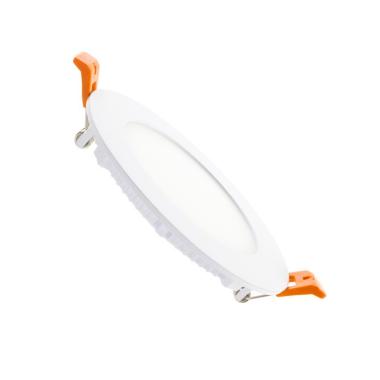
In Stock, delivery in 24/48h
2.99 £
Round SuperSlim 6W LED Downlight Ø105mm Cut Out
View product
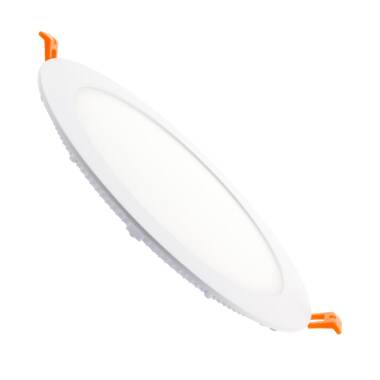
In Stock, delivery in 24/48h
4.99 £
Round SuperSlim 18W LED Downlight Ø205mm Cut Out
View product
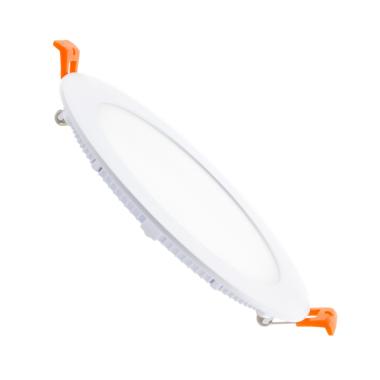
In Stock, delivery in 24/48h
3.79 £
Round SuperSlim 9W LED Downlight Ø133mm Cut Out
View product
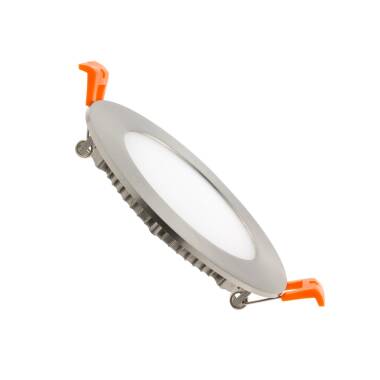
In Stock, delivery in 24/48h
3.79 £
Round SuperSlim 6W LED Downlight Ø110mm in Silver
View product
For this reason, it is usually complemented with other types such as the ones we will see below….
Functional or task lighting
Functional lighting focuses on its practical utility: its main purpose is to facilitate the performance of specific tasks beyond the decorative.
What is functional lighting
Functional lighting directs light to a specific point or area so that people can clearly see what they are doing. For example, a desk lamp illuminates the work surface, helping to read or write without straining the eyes.
Practical applications
In architecture, this type of lighting is strategically placed where visual support is needed.
In kitchens, lights are installed under cabinets to illuminate countertops. In bathrooms, mirror lights provide the ideal side light for applying make-up or shaving.
In spaces such as hotel reception or the checkout area of a store, functional lighting combines precision and aesthetics to facilitate work and enhance the customer experience.
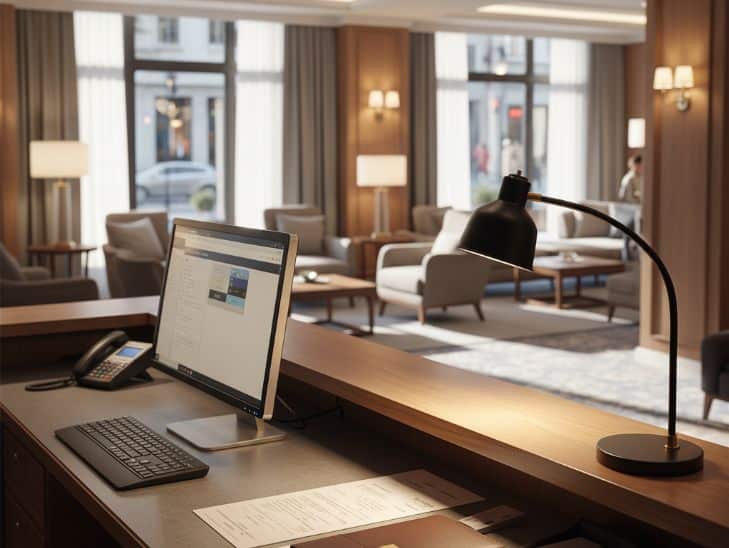
Ambient lighting
Ambient lighting is used to create a feeling or atmosphere in a space, rather than to functionally illuminate. It is the layer of light that gives warmth, tranquility or drama, and directly influences how a person feels inside the place.
What characterizes ambient lighting
This type of lighting is made up of soft lights that illuminate surfaces evenly. For example, in a living room, a floor lamp with a translucent shade can be combined with light hidden in the ceiling behind an LED strip molding to create a soft, welcoming glow.
Technically, ambient lighting often uses indirect light. This means that the fixtures face walls or ceilings so that the light is reflected softly. It is also common to use warm lights (2700-3000K) to create an intimate atmosphere or colored lights to create soothing ambiance or artistic flair.
Function and practical uses
In addition to being aesthetically pleasing, ambient lighting serves a practical function. It can serve as a nighttime courtesy light for getting around without turning on main lights. For example, dimmable LED lights installed behind the headboard provide just the right amount of light without interrupting rest.
In commercial or hospitality spaces, ambient lighting defines the identity of the place. In a restaurant, warm, subdued lights create an intimate ambiance, while in a bar, soft neon or colored spotlights add style and personality.
Accent lighting
Accent lighting is used to highlight specific objects or details in a space. Its purpose is to draw attention to a specific point and create contrast with the general light of the environment.
What is accent lighting
Also known as focal or highlight lighting, it functions as a visual highlighter. It turns a common object into the center of attention by projecting a concentrated beam of light onto it. For example, they can be used to highlight a painting, sculpture or decorative texture on the wall.
To achieve this effect, luminaires with concentrated light beams and closed optics that can be adjusted in angle or direction are used. Spotlights allow light to be directed exactly to the desired point, creating visual effects that highlight textures or volumes.
Architectural applications
In architecture and interior design, accent lighting is very common in museums, galleries and stores, where the aim is to highlight works or products. In the home, it can be applied with tracks with adjustable spotlights to illuminate shelves, plants or decorative elements such as columns.
Recommended products
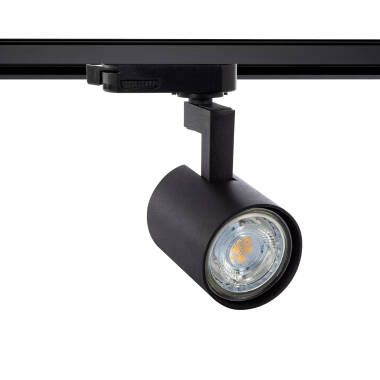
In Stock, delivery in 24/48h
15.49 £
3-Circuit Track Spotlight Juik for GU10 Bulb
View product

In Stock, delivery in 24/48h
20.69 £
1-Circuit Track Spotlight Kuranga for GU10 Bulb
View product
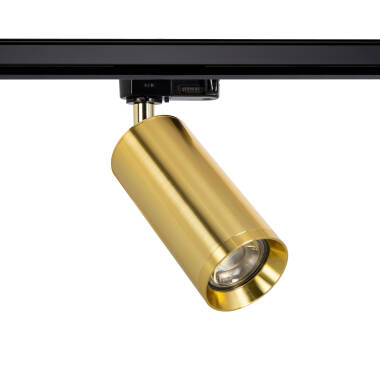
In Stock, delivery in 24/48h
15.19 £
3-Circuit Track Spotlight Quartz for GU10 Bulb
View product
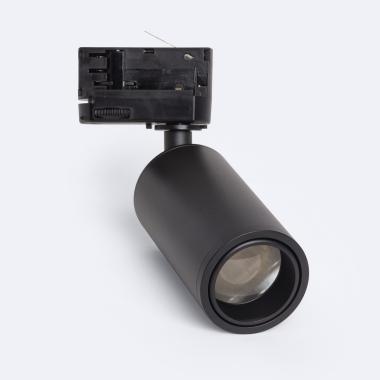
In Stock, delivery in 24/48h
17.39 £
3-Circuit Track Spotlight Agate Multi Angle 10-50° for GU10 Bulb
View product
Outdoors, it is used to enhance facades or gardens. For example, outdoor spotlights placed at the foot of a tree or directed at a wall can create striking effects that add elegance and presence at night.
Decorative lighting
Decorative lighting represents one of the most expressive and sensory dimensions of contemporary lighting design. Beyond its practical function, it acts as a narrative and emotional resource that defines the visual identity of a space.
In the academic and professional field of design, it is considered a key element in reinforcing the architectural atmosphere, directing the viewer’s attention and communicating the aesthetic intent of the project.
Definition and purpose
From a conceptual perspective, decorative lighting integrates light as an expressive material. Its value lies in its ability to transform spatial perception through the intentional use of form, materials and color temperature.
A sculptural pendant lamp can function as a visual center of gravity within a dining room, while ambient LED garlands bring lightness and dynamism to outdoor environments.

Architectural and interior design applications
In the architectural field, decorative lighting is used as a tool for spatial characterization. In restaurants, hotels or boutiques, designer suspended luminaires and artistic wall sconces reinforce the visual narrative and brand identity.
In ephemeral spaces, such as art installations or fairs, light curtains and backlit letters are integrated as scenographic components that contribute to the sensory and communicative impact of the space.
Although their primary purpose is aesthetic, decorative lighting directly influences visual ergonomics and user comfort. A dimmable LED strip behind a television can reduce visual contrast and enhance the viewing experience, while a sculptural floor-standing luminaire serves a dual function: sculptural element during the day and indirect ambient light source in the evening. This balance between function and emotion defines its relevance within integrated lighting design.
In professional practice, decorative lighting is the synthesis between technical precision and aesthetic sensitivity. More than a visual complement, it constitutes a language capable of articulating the spatial narrative.
Its successful design is not only measured by the quantity or quality of light emitted, but by the way it dialogues with materials, textures and architecture to generate coherent, memorable and emotionally meaningful atmospheres.
Scenic or theatrical lighting
Scenic or theatrical lighting unites art and technique to transform a stage into an immersive visual experience. It allows you to see the performers and also to express emotions and reinforce the story.
It is used in theaters, concerts and events and is dynamic, changing in real time. For example, RGB LED moving heads throw colored beams synchronized to the music. In theater, a zenithal Fresnel spotlight can simulate moonlight on the actors.
Equipment and technical control
Event lighting includes a variety of equipment such as PAR, Fresnel, moving heads and RGB LED lights, as well as a wide range of accessories such as interchangeable lenses, color filters, diffuser gels and LED bars to create different stage effects.
These fixtures are controlled by DMX consoles, a digital system that allows adjusting parameters such as color, intensity, direction, beam opening and speed of movement of each luminaire. It is also possible to integrate computer control software, which allows designing scenes and synchronizing lighting with audio, video or special effects.
Thanks to this level of precision, lighting designers can program detailed, automated cues that are coordinated with the music, scenic rhythm or visual narrative of the show.
Examples of use
At a concert, strobe lights flash to the beat of the drums, while moving heads project beams of light that cross over the audience, creating energy and dynamism.

In a ballet, a change of light from blue to gold accompanies the emotion, enhancing the smoothness of the movements. In a play, a warm overhead light can highlight an actor in a moment of solitude. In a fashion show, LED side spotlights mark the path of the models and brighten the fabrics.
Safety and emergency lighting
Safety and emergency lighting is essential to protect people and spaces. Its main function is to avoid accidents, prevent crime and guide people in the event of an emergency or power outage. In general, it is divided into two types: safety lighting and emergency lighting.
Safety lighting
This type of lighting is used to prevent intrusions and improve nighttime visibility in outdoor areas or areas where there may be danger. For example, a house can be fitted with motion sensor lights that automatically switch on when they detect someone, helping to deter theft or intruders.
In factories, warehouses or shopping malls, outdoor LED floodlights are used to illuminate parking lots, courtyards or perimeters. These lights are usually powerful and cool-toned, which helps to improve visibility and maintain security. Also, street lighting plays an important role in reducing crime and making streets safer.
From a design standpoint, security lighting should be practical, but also blend in well with the environment. For example, wall sconces or path beacons offer a safe solution without altering the aesthetics of the facade or garden.
Emergency lighting
Emergency lighting is activated when the power goes out. Their purpose is to help people find their way out quickly and safely. It is common in public places such as cinemas, theaters or shopping malls, where there are illuminated exit signs, corridor beacons or luminaires with built-in batteries.
These systems should remain on for 1 to 3 hours after a power outage to ensure safe evacuation. Lights should be placed along evacuation routes, at visible points such as stairways, corridors or exits, and designed to be clear and easy to understand even in panic situations.
The importance of combining lighting typologies
There are different types of lighting, and each serves a specific function. General lighting provides a uniform base; functional lighting helps perform specific tasks; ambient lighting creates a pleasant atmosphere; accent and decorative lighting highlights visual elements; scenic lighting unites art and technique; and safety and emergency lighting ensures protection and guidance when there is an electrical problem.
How they are combined in practice
A well thought-out lighting project mixes various types of light to achieve comfortable, safe and visually appealing spaces. General lighting serves as the foundation; functional lighting provides direct light where it is needed; ambient lighting provides warmth; and decorative or accent lighting gives personality to the space. Finally, emergency and security lighting is key to maintaining safety in the face of unforeseen events.
Examples in different spaces
In a home, this combination can be seen in a living room where ceiling lights provide general illumination, a floor lamp adds ambiance, decorative sconces highlight pictures, and a discreet emergency light is ready for a power outage. In the kitchen, LED strips under cabinets illuminate the countertop, while recessed spotlights maintain even light.
In professional settings, such as offices or stores, a mix of functional and ambient lighting enhances productivity and visual comfort. In a restaurant, for example, recessed downlights ensure visibility, pendant lights over tables create a cozy ambiance, and decorative spotlights accentuate the textures of the space.
Benefits of integrated lighting design
Understanding how to combine different types of light helps to create environments that are more pleasant, efficient and adapted to each use. Each type of lighting serves a function: some provide comfort and aesthetics, others enhance safety or performance. Light can be practical, like a light bulb in a hallway, or emotional, like a warm lamp in the living room.

